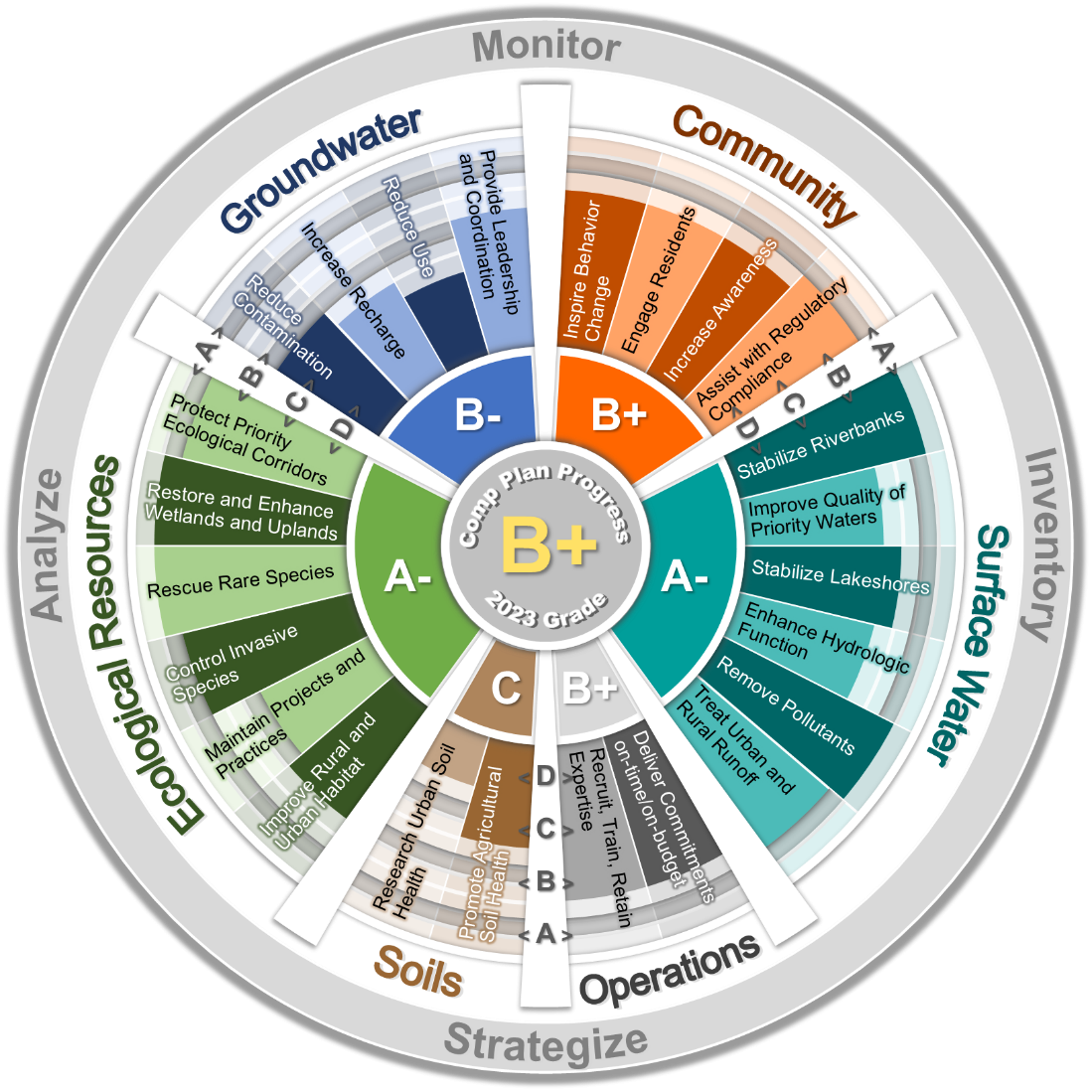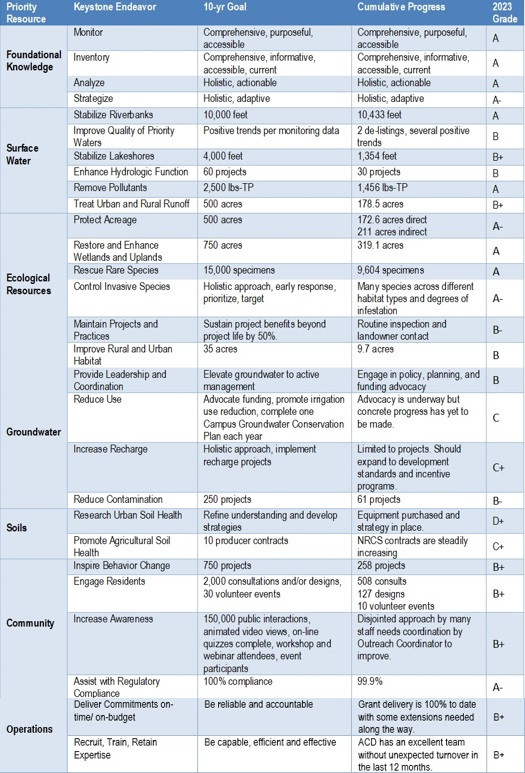Ten-year comprehensive plans are the foundation for many agency operations. We embarked on our planning process in the fall of 2018. It has been a long journey, with unexpected turns. Where we landed is not anything like I originally imagined. It is a product of the process, made better by the expertise and insight of many partners. While we may be situated in a landscape dominated by shifting sands, we are poised to have our operations solidly grounded in our 2021-2030 Comprehensive Plan.
Managing natural resources is a complicated endeavor. They are all interconnected. Changes to one resource cascade into changes in the others. As we set out on this journey, we grappled with how to compartmentalize natural resource management so we could structure a plan. Should it be by habitat type: lakes, river, wetlands, prairies, savannas, and forests; by land cover: agriculture, residential, commercial, open space; by what we value and use: drinking water, recreation, wildlife, food, or by what we need to fix: invasive species, flooding, contamination, erosion, depletion? With guidance of ACD's Board of Supervisors, we distilled it to the most fundamental elements of ecosystems: land, water, air, and biota. After dropping 'air' for lack of jurisdiction and programs to act at the necessary scale, and splitting water into surface water and groundwater, we had the foundation for discussing and managing Anoka County ecosystem components.
We engaged technical panels of experts to discuss each of the four topics: soils, surface water, groundwater and biota to discern sixteen root benefits provided, both intrinsic and anthropocentric. A vote on the relative importance of these benefits provided a ranking; shown below in order of priority from left to right and top to bottom.
Thereafter, the Technical Advisory Committees identified the fundamental threats to those benefits. The ensuing list to contain or diminish the threats became our twenty-four objectives. Those objectives split into 70 strategies. This is where it got complicated. Because each objective could apply to multiple resources, and each strategies could apply to multiple objectives, the number of cross-connections was mounting, and not in a way that we could manage or represent in our comprehensive plan. At that point, someone suggested that the spreadsheet, wherein this complicated matrix of resources, threats, objectives and strategies was growing, should be part of the plan; published in its current form. This idea took root and empowered us to keep building onto what we've come to call The Matrix. Now, fully incorporating 281 actions along with coefficients of efficacy at multiple levels along with unit costs, The Matrix provides a means to consider the return on investment of every potential action for every resource benefit. The nearly 3000 rows of actions can be displayed quickly in countless configurations employing easy-to-use data analysis tools. The structure facilitates the creation of annual plans and can be easily modified to integrate new technologies and practices as the science and practice of natural resource management evolves. Over the next four weeks we will be unveiling this work product and look forward to receiving input from our partners and stakeholders as we strive to improve the way we serve Anoka County residents.


